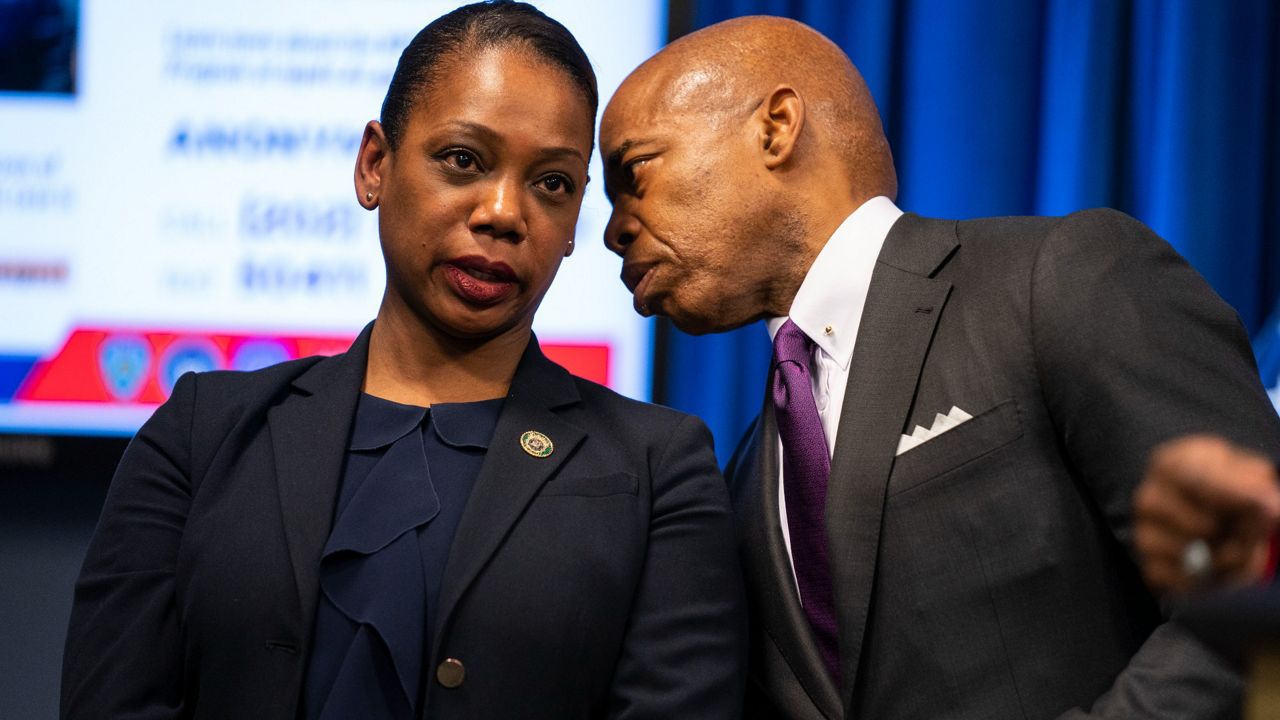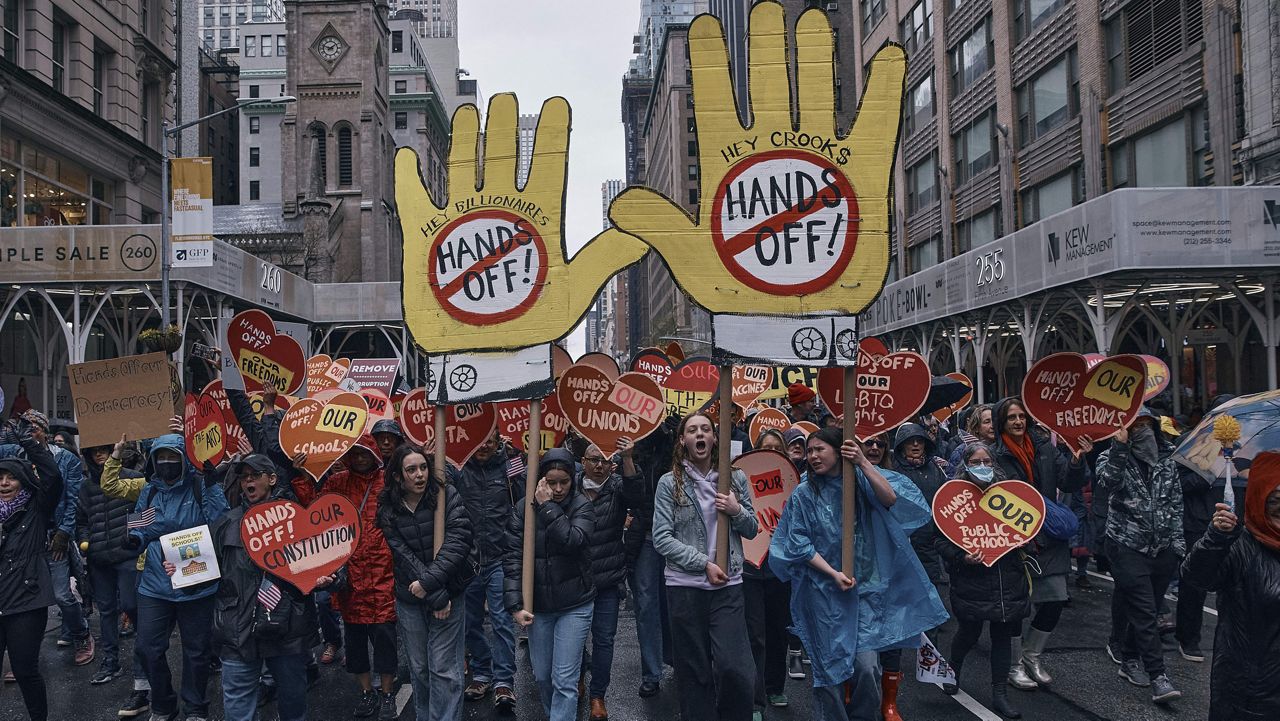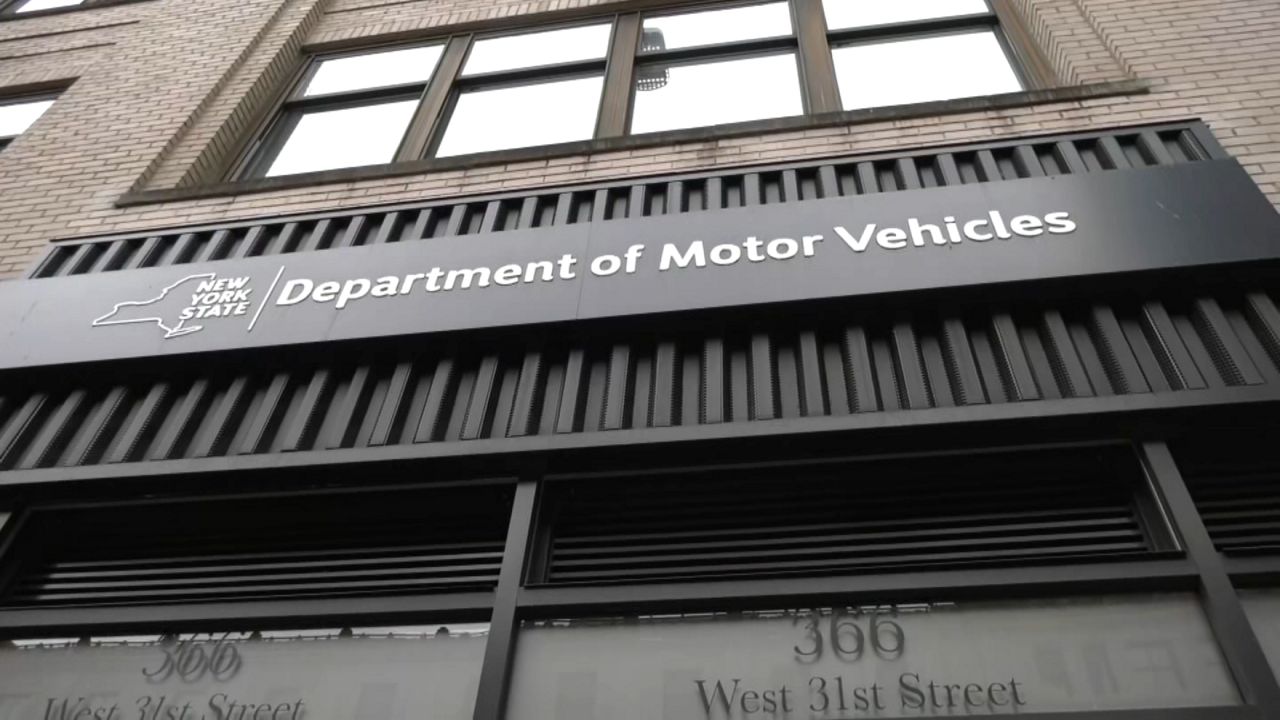A new anti-gun police unit. Mental health outreach. Quality-of-life disruptions. Case backlogs in prosecutors’ offices. Hiring gaps in a crucial police oversight board.
City Council members dug into the nuts and bolts of crime prevention Friday in the public safety committee’s first budget hearing of the year, posing questions to top police brass, Civilian Complaint Review Board leaders and the city’s district attorneys.
The city is setting the budgets for its public safety efforts at a pivotal time: Crime is on the rise, with high profile shootings, hate crimes and subway attacks dominating headlines, just as a new mayor and police commissioner hope to make their mark by bringing a renewed intensity to policing.
Arrests are up across a wide range of offenses — and up by 56% in the subway system, year to date — and on Tuesday the NYPD’s revamped anti-gun policing unit, called Neighborhood Safety Teams, began deploying to a planned 30 precincts.
The proposed budget for the upcoming fiscal year is set at $5.2 billion — down from $5.6 billion for the current fiscal year.
The hearing represented NYPD Commissioner Keechant Sewell’s first time facing persistent public questioning from lawmakers. Besides her opening remarks, Sewell spoke rarely, frequently delegating answers to deputies except when taking the opportunity to push back on criticism of the department.
She committed to firing officers who violate public trust, closing down or consolidating programs to cut spending and improving officer training.
Invoking the public support voiced in the wake of the January shooting deaths of Officers Jason Rivera and Wilbert Mora, she said she wanted to create “a climate of mutual respect” with city lawmakers.
“I ask that we not allow this moment to fade quickly,” Sewell said. “I ask that you not allow a few loud voices to place wedges between us. And that you discount their attempts to broadly condemn every police officer on the wrongs of the few.”
Yet police officials faced tough questioning from council members across the political spectrum over communication between them and the department, quality of life complaints and the efficacy of police technology.
Councilwoman Kamillah Hanks, the committee chair, focused her first question on the anti-gun unit, a recreated version of a plainclothes unit that led the department’s notorious stop-and-frisk practices, which a federal judge ruled unconstitutional.
NYPD officials said that at the end of the principal rollout of the new units, 238 officers will be stationed across 30 precincts, patrolling in unmarked cars but wearing uniforms that clearly denote them as NYPD officers.
Yet as many as 500 officers could end up part of the units, Deputy Chief of Department Isa Abbassi said. Their primary measure of success, he said, would be whether the unit operates within the limits of the U.S. Constitution.
“In the history of the NYPD, this is the most highly trained, constitutionally focused group of officers performing this work,” Abbassi said.
Police officials insisted that, because of the checkered history of the unit’s plainclothes forerunner, they had met with communities to discuss how the new units will function. But multiple council members said they had no record of being invited to such discussions.
“Something is wrong with that,” Councilwoman Darlene Mealy, who represents parts of Brownsville and Bedford-Stuyvesant, said. “I think it's a breakdown between the deputy inspectors and the community.”
Abbassi said the department’s three-step protocol for notifying the community about the new units began on day one of the rollout, requiring a roundtable discussion with community leaders within seven days of that.
“Let me just say that it was done backwards,” Councilwoman Carmen De La Rosa, who represents Upper Manhattan, said. “They rolled out earlier this week, and we still have not met them. Seven days after they rolled out is seven days too late.”
Council members questioned the usefulness and legality of several key policing technologies, including Shot Spotter, a sound recording system that listens for gunshots, and the department’s database of supposed members of gangs.
The Shot Spotter technology covers 90 square miles of the city, across 50 precincts. According to Chief of Crime Control Strategies Michael LiPetri, 40% of confirmed gunshots first noticed by the Shot Spotter’s microphones were not called in via 911, and may have gone unrecorded by police.
But only about 20% of Shot Spotter’s notifications of a potential shooting incident were confirmed with evidence like recovered bullet casings or witness reports, LiPetri said.
“That leaves 80% unconfirmed,” Councilwoman Alexa Avilés, who represents Sunset Park and Red Hook, said. “That doesn't seem to be the right ratio we’re looking for.”
Councilwoman Sandy Nurse, who represents Cypress Hills and parts of Bushwick, questioned why the public has no way to know if they have been put in the NYPD’s database of supposed gang members.
Oleg Chernyavsky, the NYPD’s assistant deputy commissioner of legal matters, defended the database as a necessary investigative tool, and insisted that the department routinely removes people from the database if they meet certain criteria. This year, officials said, they added 164 names to the database, and removed 94; last year they added 441, and removed 867. Over 99% of the database is comprised of Black and Latino city residents.
“Ultimately it’s an investigative lead that in and of itself will not result in your arrest,” Chernyavsky said. “Individuals do not have a right to dispute evidence until they're ultimately in court.”
The hearing also saw some contentious moments between legislators and police officials. Councilman Charles Barron, who represents parts of East New York, accused Sewell of emotionally manipulating the public to support the police in the wake of Mora’s and Rivera’s killings.
“We don't need a change in the complexion or gender of the police commissioner,” Barron said. “We need a change in the directions of police policies.”
“In no way are we manipulating the emotions of people because our officers were murdered or on the deaths of children,” Sewell responded.
Leaders of the Civilian Complaint Review Board answered questions over why hiring has lagged at the agency, which is tasked with investigating allegations of police misconduct.
Jonathan Darche, the board’s executive director, said the group approved 15 hires Thursday, with plans to approve 16 more by the end of the month.
The hires are needed, Darche said, to move through the board’s significant backlog of cases: Last year, the board received 1,749 complaints, and completed investigations for 194 of them.
“Many of those cases are still open, and we’re hoping to close them quite soon,” he said.
In some cases, though the board has improved access to police body camera footage, Darche said, that can slow an investigation down, since investigators may have to comb through hours of footage.
“When we have the body-worn camera footage, it doesn't necessarily make the process go faster, but it makes it more efficient,” he said.
The city’s district attorneys received the lightest questioning of the day, with several council members asking whether their offices had received sufficient funding for prison diversion programs, attorney salaries and to staff hate crimes units. In Brooklyn, one official said, the delay to prosecute a gun crime is now four to five months.
Manhattan DA Alvin Bragg said that personnel are down in his office due to attrition, and that the mayor’s proposed budget did not include sufficient funding for the hate crimes unit. The docket of unprosecuted cases is now the highest it’s been since the unit was formed, he said.
“The funding on this is crucial, so we can move forward,” Bragg said.








